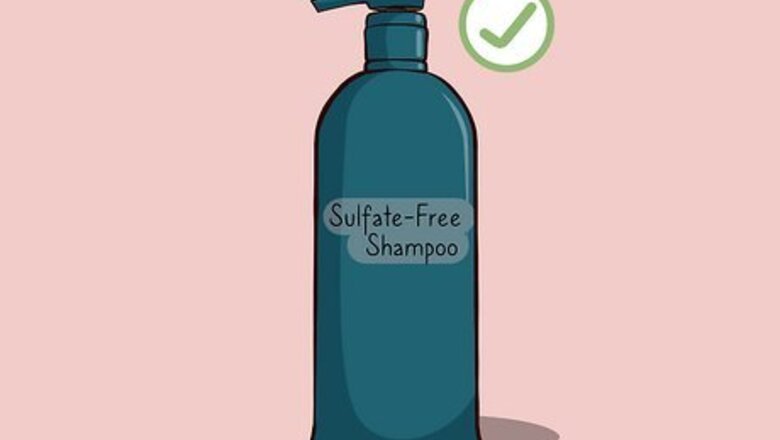
views
Choosing the Right Shampoo
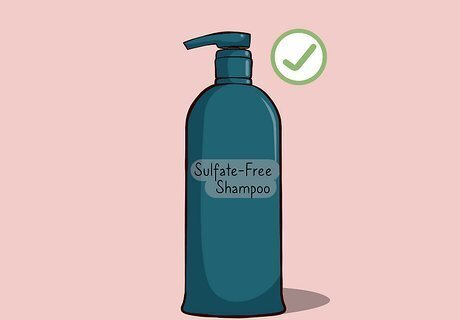
Choose a sulfate-free shampoo. Sulfates (also known as SLS or sodium lauryl sulfate) create a foamy lather, and they are a common ingredient in many soaps, toothpastes, and body washes. The extra lather doesn’t make your hair cleaner, but it does tend to dry out your hair and leave residue that can make hair appear dull and frizzy. A sulfate-free shampoo will provide a gentler clean to help protect fragile white hair.
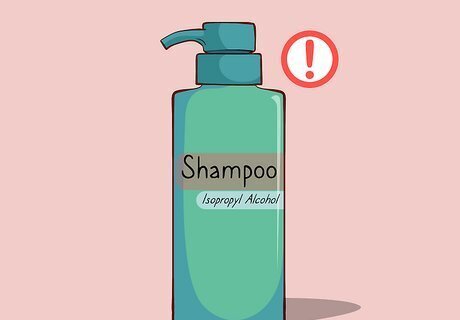
Avoid alcohol in shampoo and other hair products. When isopropyl alcohol, propyl alcohol, or ethanol are added to shampoos, they can cause additional dryness. That dryness can even cause the hair to break down from the inside, leading to breakage and frizziness. Be sure to check the label and avoid any hair products with these ingredients.
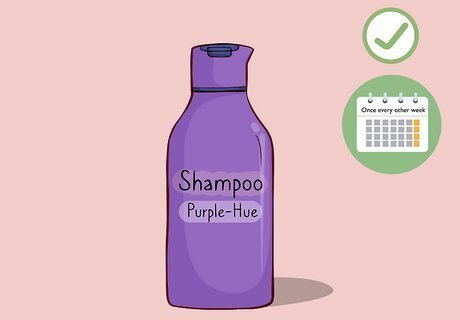
Use a purple-hued shampoo once every other week. There are a number of shampoos that are formulated especially for white hair. They usually have a purple, silver, or blue tint that helps counteract the yellow tone that white hair can sometimes have. However, they can give your hair a blue or purple tint if you use them more than recommended.
Washing Your Hair
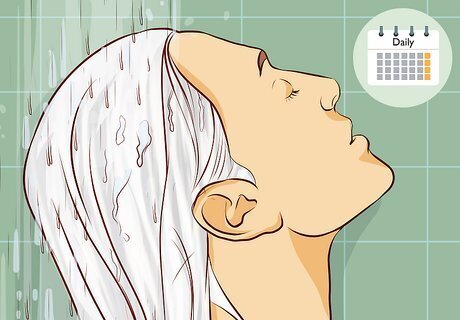
Wash your hair every other day at most. White hair tends to be drier than hair with pigment, and washing it every day can make it drier. Over time, this will cause frizziness and a loss of shine. Only wash every other day, or less if you can get away with it. If your hair tends to be oily, try a dry shampoo to help keep your scalp feeling fresh between washes.
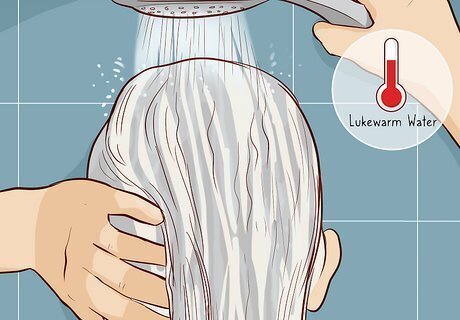
Wash your hair in lukewarm water. Hot water can be drying, but warm water will help the cuticles open up. This will help cleanse your hair of the oils and dirt that can build up and will allow your conditioner to penetrate deep into the hair strand.
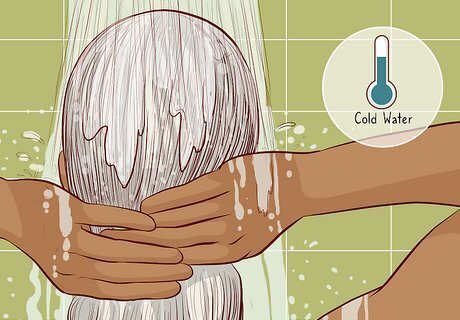
Rinse your hair with cold water. Cold water causes your hair's cuticles to close, which helps to seal in the conditioner. After you have conditioned your hair, get the water as cool as you can stand it before you rinse. Make sure to thoroughly remove all of the conditioner from your hair, as it can leave a residue that will dull your hair's shine. Using apple cider vinegar when you rinse your hair can also help seal the cuticle and make your hair shiny. Mix 1 part vinegar to 3 parts water in a spray bottle, apply to your hair, and massage from your scalp to your ends. Let it sit for 5-10 minutes, rinse, and follow with your favorite conditioner. Use this treatment not oftener than once a week.
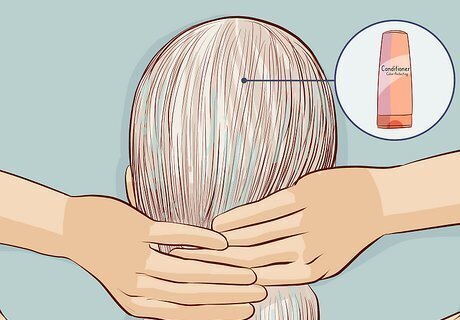
Deep condition once or twice a week. A deep conditioner is a thicker moisturizer formulated to penetrate deep within the hair. Look for a conditioner made with natural oils, like vitamin E oil or coconut oil. Leave it on while you shower, or if your hair is really dry, wrap your head in a scarf and leave the treatment on overnight while you sleep. This will give your hair intense hydration that will leave it healthy and shiny. After the deep treatment, rinse your hair thoroughly with cold water. If you have a hooded dryer, you can apply the treatment to your hair and put a shower cap over your hair. Sit under the dryer for 15 minutes for a quick treatment.
Protecting Your Hair Day and Night

Avoid heat styling. Heat can damage your hair, and brittle white hair needs to be protected as much as possible. Avoid using heated styling tools, like a blowdryer, curling iron, and hair straightener. Let hair air dry in foam rollers to achieve the style you like. If you do decide to use heat styling for a special occasion, spray your hair first with a special product designed to protect your tresses from heat damage. If you use a hair dryer, turn it on to a lower temperature setting. This works especially well for finer hair types.

Wear a hat if you spend a lot of time in the sun. UVA and UVB rays can damage your hair, especially the outer layer. This can lead to yellowing, dryness, breakage, and frizziness. White hair is especially vulnerable to sun damage, so avoid going out in the sun, and make sure to wear a hat or bring an umbrella if you know you’ll be outdoors.
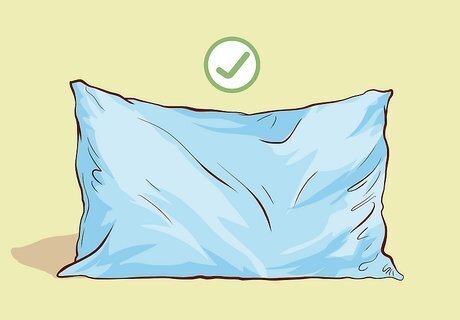
Switch to a satin pillowcase. This isn’t just a luxury; satin pillowcases really are better for your hair. If your pillowcase is a rough material, the hair strands encounter friction as you move in your sleep. Over time, this can lead to hair breakage. When you sleep on a satin pillowcase, your hair is able to slide easily over the fabric.
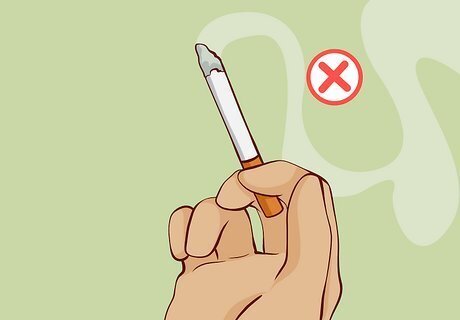
Quit smoking if you do smoke. Smoking is one of the leading causes of yellowing in hair. It is also thought to damage hair follicles, which leads to thinner hair. If you smoke and you want to improve the appearance of your hair, consider cutting back gradually or using nicotine patches to help you quit.

Trim your hair every four to six weeks. Since white hair is usually dry, it has a tendency to frizz. Split ends and uneven growth can make frizziness appear worse. Regular trims will keep your hair looking sleek and healthy.

















Comments
0 comment